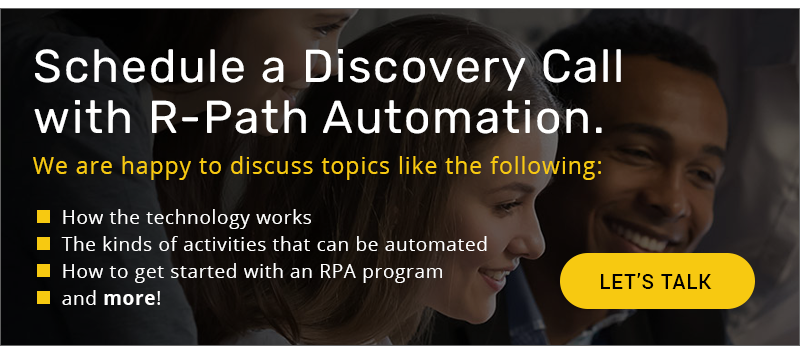2021 has been a year of career transitions as millions of Americans reevaluate their career paths post-pandemic. According to recent surveys, more than half of the workforce is planning to seek new employment opportunities within the next 12 months. The phenomenon has even been given a name: The Great Resignation.
This shift has created yet another challenge for organizations already grappling with the pandemic’s ripple effect on operations (like material shortages and supply chain disruptions). The sudden exodus of so many workers has left many organizations hustling to fill open positions.
At the same time, post-pandemic job seekers are demanding an improved employer experience that’s aligned with their values and priorities. It’s more important today than ever that an employee’s hiring and onboarding is seamless and maintains focus on the organization’s mission – and the employee’s contribution to it – instead of new hire paperwork.
How can companies deliver this experience? This article will outline several real-life RPA use cases that illustrate how automation ensures your new employees hit the ground running instead of being mired in forms and policy reviews. Read on to learn more.
Focus on People, Not Processes
An employee’s hiring and onboarding experience is among the first direct interaction they will have with your organization. Therefore, it’s imperative to create a positive experience that begins even before their first day. Here, automation solutions like Robotic Process Automation, or RPA, are quickly becoming a powerful lever companies can pull to streamline onboarding.
RPA uses bots, also known as digital workers, to automate common and repeatable tasks. While it might seem counterintuitive to insert a digital worker into the new hire experience, automating onboarding tasks makes for a smooth employee transition and keeps your HR team focused on the new team member instead of the process.

5 RPA Use Cases for Hiring and Onboarding
Robotic Process Automation is extremely flexible and can be used in a wide variety of use cases, but it requires planning for proper execution. It’s best to begin by looking at your hiring and onboarding process holistically, rather than zeroing in on a specific task. Look at each department involved in the process, along with the technologies and systems used, to identify the best automation opportunities.
Here are five RPA use cases that illustrate practical ways RPA can create a positive employee onboarding experience that’s consistent for all new hires.
1. Coordinating Preboarding
Before an employee’s first day, they’ll need to complete and sign a variety of documents, including the offer letter, employment agreement, and tax forms. With RPA, documents can be shared in a logical stream for the new hire to complete digitally and return. The digital worker ensures each form is filled out correctly and appropriately, flagging any errors or missing fields to ensure compliance and completion.
Automating preboarding tasks makes it easier for the new employee to understand what’s needed and complete the documents in a timely manner. It also saves the HR team’s time and enables them to focus on the personal check-ins needed to create a warm and welcoming new hire experience.
2. Building Engagement before the Hire Date
The time between when a new hire signs their offer letter and their first day of work is often several weeks. RPA can be used to send a series of personalized emails, text messages, and/or chat messages to the new employee with helpful tips and information about your company’s culture. This helps the new employee feel engaged and part of the team before they’ve officially started!

3. Setting up IT Access Accounts
Anyone working in a HR capacity knows that the weeks leading up to a new hire’s start date are full of activity and coordination. Making sure new team members have access to everything they need on their first day is essential, especially network and virtual tool access.
Few things are more frustrating for new employees than to experience issues logging in. Fortunately, a digital worker can be designed to automatically create a new employee’s company accounts. Specific RPA use cases in this instance include:
- Setting up user roles
- Assigning hierarchical information
- Setting up time tracking
- Setting up expense reporting
- Assigning the new hire to Active Directory
- Submitting requests for access badges or key fobs
- Creating employee records in external systems (e.g., payroll, employee engagement, 401(k), benefits, insurance, credit card, etc.)
4. Ordering Required Equipment
Having the right equipment is also a must on a new hire’s first day. Whether your employee will work on a laptop, an engineering workstation, or a tablet on the go, RPA can ensure the appropriate equipment is ordered based on the employee’s department, role, and accessibility needs. Automating this process ensures no steps are missed and that everything the employee needs is delivered prior to their first day so that they can hit the ground running!
5. Ordering Company Attire or Swag
For roles that require specific attire, organizations can utilize RPA to automate the ordering of uniforms. The same is true if your organization provides branded swag like a t-shirt or sweatshirt! A message, including the employee’s size and uniform requirements, can be generated and sent to the fulfillment center, ensuring the employee has what they need, or want, to wear on their first day. The digital worker can also share the new hire’s address for direct shipping and confirm delivery of the package to the HR team.
In the End, It’s All About People
Employee hiring and onboarding can be a stressful and tedious process for HR teams and new hires alike, but it doesn’t have to be! Implementing automation to help your teams manage the completion of documents, routine communications, and coordination of employee preferences could be the difference between an “OK” first impression and a stellar one.
Adding digital workers to your HR team ensures process compliance while also building rapport with the new hire leading up to their first day. Overall, leveraging the power of RPA creates a seamless employee onboarding process, empowering HR teams to remain focused on the human experience and new hires on their new mission.
Ready to get started with RPA for employee onboarding? Contact R-Path Automation today to learn more.

